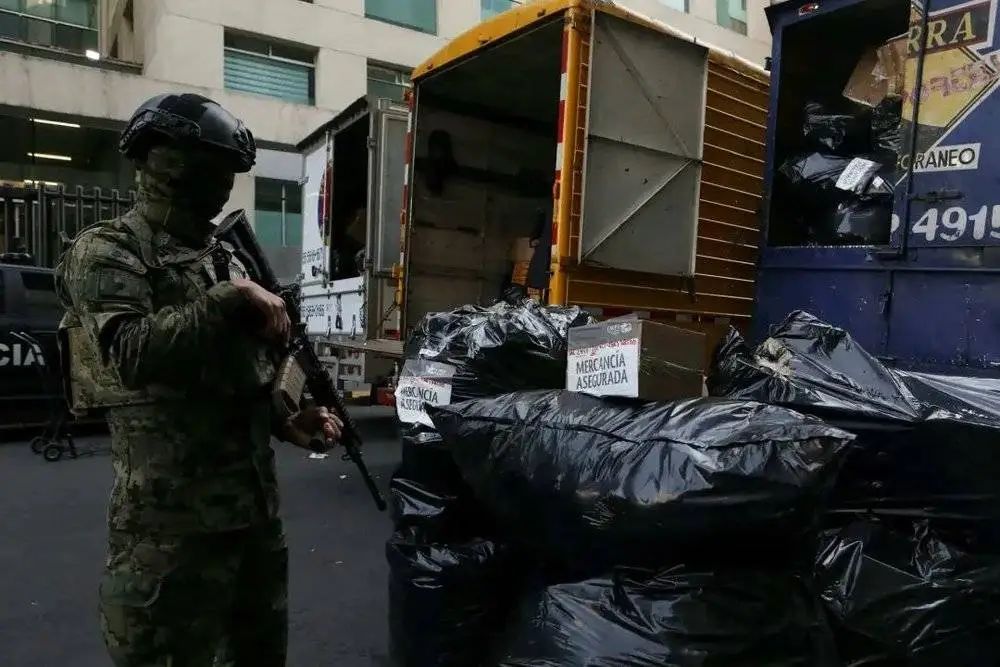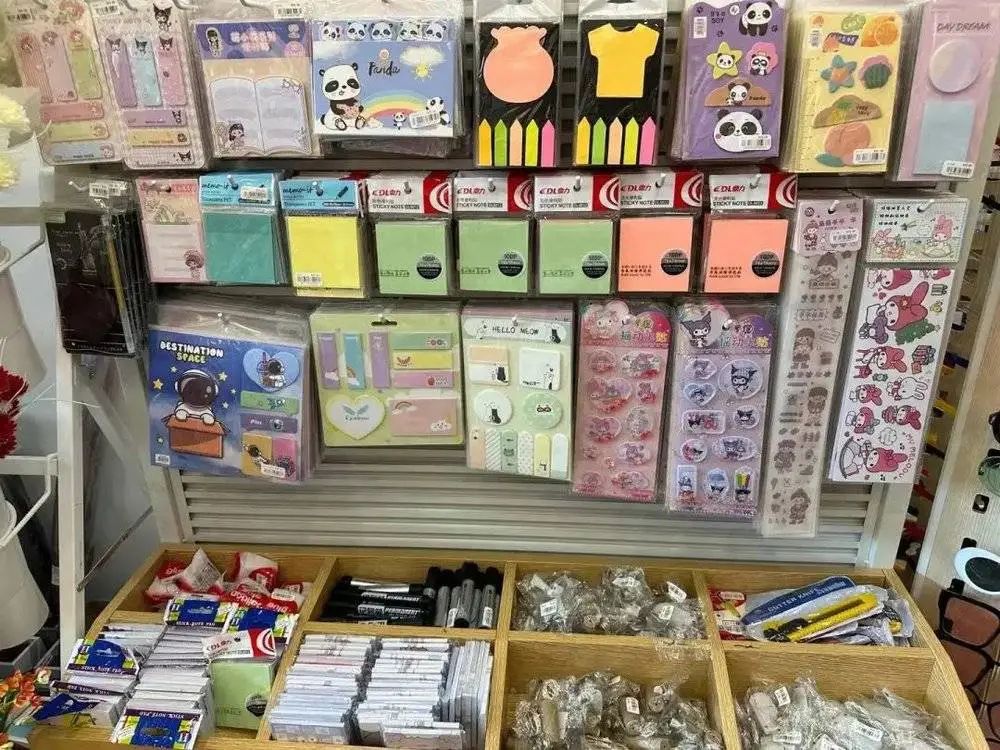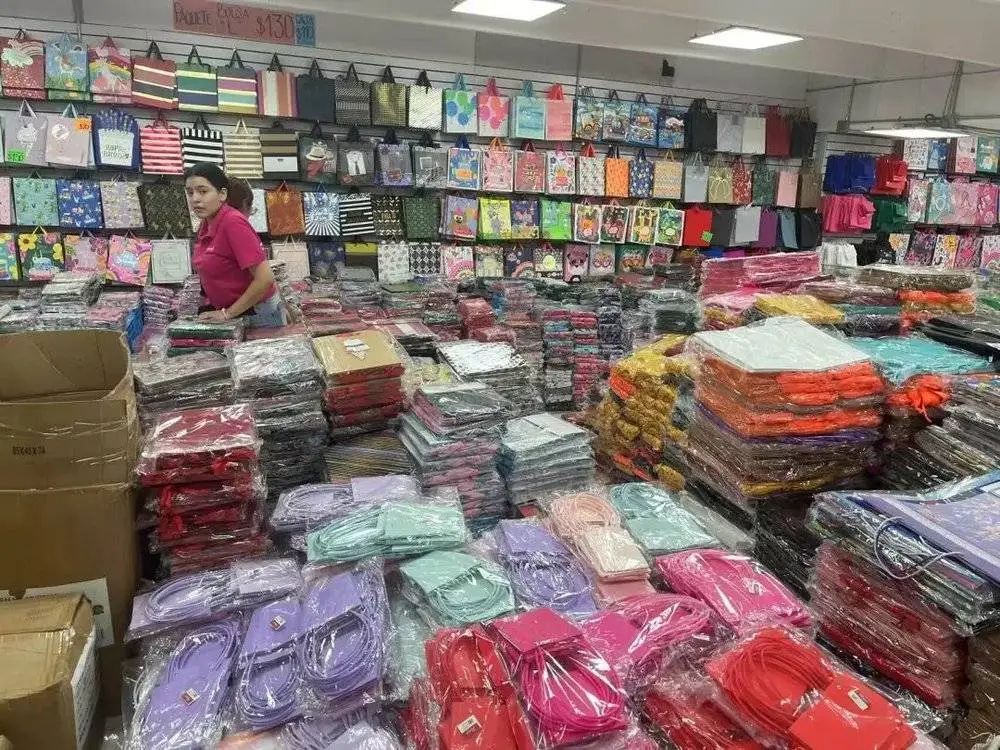html
Chinese Entrepreneurs in Mexico: Navigating Trade Wars and Business Challenges
Introduction
When Trump announced a 50% tariff hike on China, Chinese businesswoman Fei Wang, who was far away from Mexico City, was counting goods in a warehouse. This seemingly distant geopolitical decision was about to change the trajectory of her life. Over the past five years, countless Chinese entrepreneurs like her have traveled across the Pacific Ocean to build a vast business network in Mexico, but now they have to face the existential test of drastic policy changes.
1. Sudden Policy Strike

On November 28, 2024, Mexico City’s largest distribution center for Chinese goods, Yiwu Trade City, was subjected to a lightning raid. 200 armed law enforcement officers blocked the 18-story building and seized goods worth US$4.09 million (about 26.6 million yuan). Lin Haiping, one of the city’s operators, fell to his office in a heap as he watched trucks loaded with goods drive away.
The action is a subtle echo of the Trump team’s political maneuvers. Before the inauguration of the new president, the U.S. announced a 25 percent tariff on Mexican goods, which led directly to the Mexican government’s increased regulation of Chinese merchants. The Mexican Minister of Economy personally hosted a press conference, defining the action as “a necessary measure to protect the local market”.
Merchants launched a “great rescue of goods” overnight. In the 72-hour processing time limit, people pushing flatbed trucks in the back door of a long line, scrambling to transfer the inventory.” These goods are all we have.” Wang Fei said while showing the video footage shot at the time, the camera boxes of stationery piled up.
2. The Myth of the Golden Age of Wealth

The years 2019-2023 have been dubbed “Biden’s golden age” by traders. During that time, Chinese investment in Mexico surged, with $2.452 billion in capital pouring into the North American bridgehead. The biggest headache for Faye Wang, whose stationery wholesaling business had annual sales of up to $14.8 million (100 million pesos), was “counting cash until my hands cramped up”. Local law requires large cash transactions to be counted manually, which becomes a sweet annoyance.
Mexico’s young consumer base (average age 26) and hedonistic culture have created a huge market. Every Friday after payday, electronics and party supplies see a spike in sales. Chinese merchants use their supply chain to undercut the prices of goods to a level that local merchants find difficult to compete with.
This period gave birth to a number of wealth creation legends: young men in their early 20s making $600,000 in two years from selling cell phone cases; housewives achieving financial freedom from holiday decorations sourced in Yiwu. These stories spread through social media, attracting an influx of Chinese entrepreneurs.
3. A Commercial Jungle of Crises

Behind the boom there are hidden dangers. 2020, a Chinese businessman is murdered by his employees and millions of dollars in assets are swept away; 2023, an investor in a cement factory is attacked by an unknown party. Faye Wang shows a group chat on her cell phone that reminds her to contact the security company immediately when she encounters a suspicious vehicle following her, and that there must be more than three people on night duty at the warehouse.
Vicious competition is equally deadly. The number of stationery wholesalers has increased tenfold in five years, and profit margins have been compressed from 20% to 5%. The fight for the right to represent a particular hot-selling marker turned into a physical confrontation that ended with a sell-off at cost price.” We’re eating our own future.” A merchant said bitterly at an industry conference.
4. Management Dilemmas in a Culture Collision

Cultural differences in the Sino-Mexican workplace create ongoing friction. Mexican employees refuse to work overtime, and their reasons for taking time off include “sick pets” and “the weather is too hot”. The HR manager of a Chinese company laughed bitterly, “We hired 30% more employees to cope with the leave gap.” Wang Fei once banned music from the warehouse, which led to a drop in efficiency and forced the company to resume the “tradition”.
Labor law disputes are also a headache for merchants. A Chinese business owner was sued for requiring weekend stocking, and after two years of litigation he eventually compensated his employees for 12 months’ wages.” Here, the employee is always the winner.” Li, a lawyer specializing in labor disputes, concluded.
5. Exploring the Way Out Under the Receding Tide of Globalization

Faced with double pressure, merchants began to break out on multiple fronts:
- Branding transformation: Faye Wang joined forces with five merchants to form a branding alliance and develop customized stationery.
- Market shift: Examining the emerging markets in Central America, 20 merchants have already set up shop in Guatemala.
- Local integration: Hiring Mexican partners to handle government relations, 10 companies complete equity reorganization.
But Trump’s tariff stick hangs high like the sword of Damocles. The new policy requires complete proof of origin for all Chinese goods transshipped through third countries. This is a direct blow to the “Mexican labeling” avoidance strategy.
6. Wisdom of Survival in the Cracks
At the Mexico City Chinese Chamber of Commerce, we see these responses:
- Digital transformation: 85% of merchants are connected to cross-border e-commerce platforms.
- Upgrading of Compliance: 60 enterprises have jointly set up a customs clearance service company.
- Community Building: a safety mutual fund has been set up to cover 300 merchants.
“We’re learning from the philosophy of survival of the Jewish businessmen.” The president of the Chamber of Commerce pointed to the world map on the wall, “Wherever there is a gap in the market, there are Chinese businessmen.”
Conclusion
Standing in her glass-walled office on Reform Avenue in Mexico City, Faye Wang looks down at the steady stream of traffic below.” It took me five years to learn to survive here, from running a stall to owning four stores.” She opens the safe and removes visas from various countries, “Now, it’s time to study Guatemala’s market data.”
In this ongoing geo-economic game, Chinese merchants use the most primitive survival instincts to write the history of contemporary commerce. Their story is both a microcosmic microcosm of the globalization process and a vivid footnote to the resilient growth of commercial civilization. When the world enters a new round of trade order reconstruction, these economic migratory birds across mountains and seas are still looking for the next habitat.
